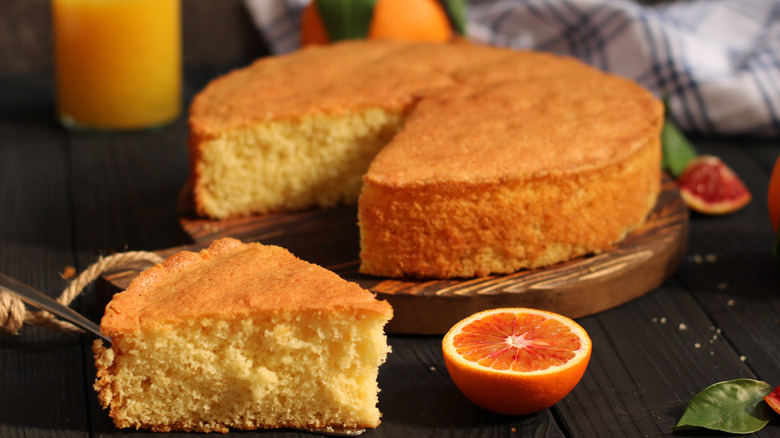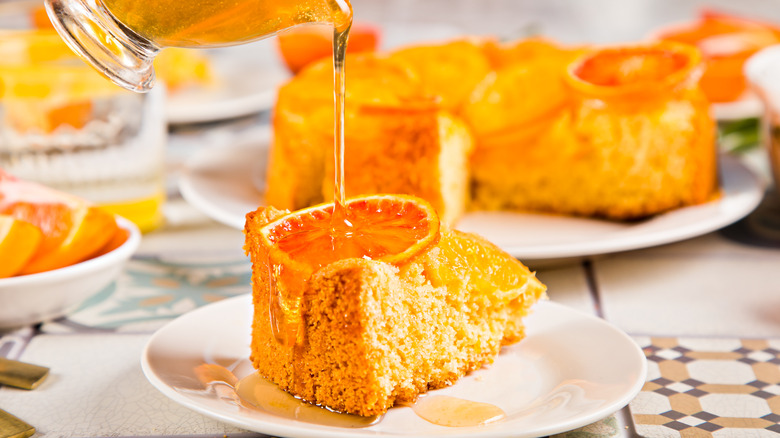The One Rule To Remember When Making The Internet-Famous Orange Blender Cake
Oranges are not only chock-full of nutrients like calcium, magnesium, and potassium, but they are also versatile. Mix the citrusy fruit with soy sauce, ginger, and more to get the base for an at-home orange chicken sauce, or freeze orange juice into cubes to get a less watery mimosa. If you've been on the internet lately, you might have seen the video of someone cutting up a navel orange and putting it in the blender with flour, eggs, sugar, and other ingredients to make a delicious orange cake. While the internet raves about the convenience of having only the blender to clean up after this cake, some forget the cardinal rule when making batter with a blender: do not overmix.
Overmixing your cake means the gluten has more of an opportunity to develop. The more developed the gluten is, the more likely the batter forms elastic strands that result in a gluey texture. Another thing that can happen is aeration, which is the effect of too much air being let into your batter. It can cause your cakes to rise prematurely, which means the cake will be more likely to sink in itself shortly after being baked.
Using a blender for baked goods
Luckily, there are plenty of ways to avoid overmixing in this recipe. For one, most recipes recommend placing all wet ingredients in the blender first and blending for 30 seconds. This allows for the eggs, orange pieces, sugar, vanilla, and melted butter to be well incorporated before mixing in the dry ingredients. Once you're ready to add in the flour, baking soda, and salt, you should only pulse the machine until just combined. A good rule of thumb with baking in general is to mix only until the dough looks uniform.
One major reason this orange cake recipe got tons of views is its use of the blender. Although it's easy to overmix, if you get it right, the blender could be a convenient way to get a variety of things done. Baking with a blender takes away the stress of figuring out if your fat and sugar are properly "creamed." Some recipes, like Brazilian carrot cake or sweet pear cake, call for a blender to chop up whole fruits or vegetables to use in the batter. Flans and other thick custard recipes sometimes use blenders to incorporate thick ingredients like condensed milk. A blender is an especially helpful tool when helpful when making gluten-free baked goods too, because adding the extra air actually makes the baked goods fluffier.


